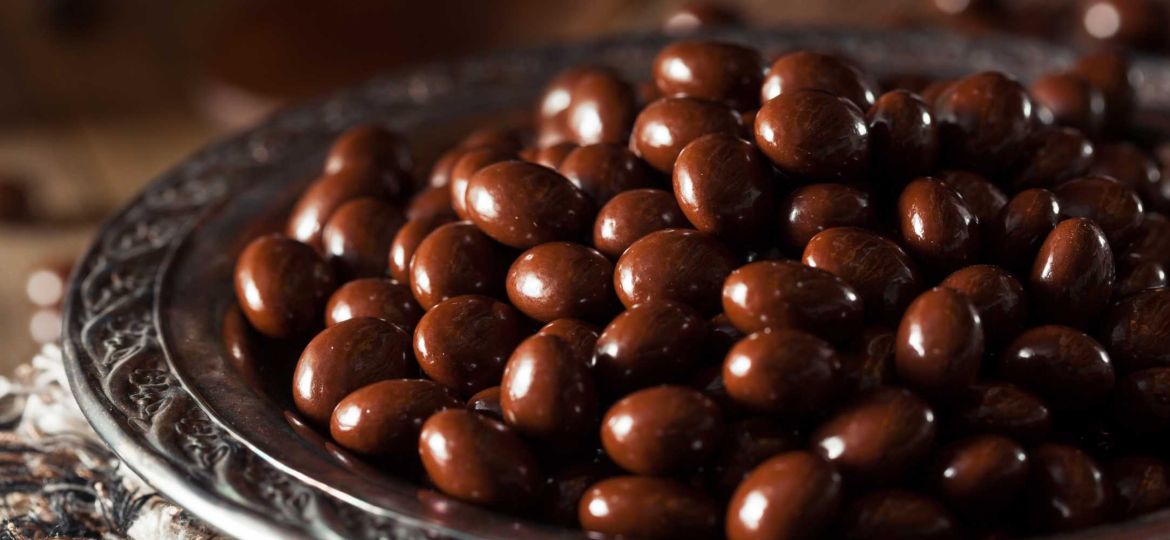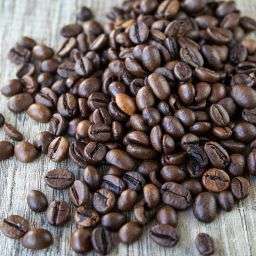
Chocolate-covered coffee beans are a delightful treat that merges the rich, robust flavor of coffee with the sweet allure of chocolate. This snack has gained popularity for its unique taste and the energy boost it offers, courtesy of the caffeine present in both the coffee beans and chocolate.
The combination provides a perfect blend for those looking for a quick pick-me-up or a delicious way to enjoy the benefits of coffee and chocolate in a single bite. Whether enjoyed as a midday snack, a gourmet gift, or a personal indulgence, chocolate-covered coffee beans cater to a wide range of palates, offering a small but potent dose of caffeine and flavor.
Health Benefits of Coffee and Chocolate
The pairing of coffee and chocolate in chocolate-covered coffee beans brings together two ingredients with notable health benefits. Coffee, a well-known source of caffeine, is also rich in antioxidants, which can help protect the body against oxidative stress and inflammation.
Similarly, chocolate, especially dark chocolate, is praised for its antioxidant content, including flavonoids that support heart health and can improve mood. The caffeine content in both ingredients can enhance mental alertness and provide a temporary energy boost.
Moreover, the mood-improving properties of chocolate, which stem from its ability to increase serotonin levels, alongside coffee’s interaction with dopamine, can collectively enhance one’s mood and overall sense of well-being.
Nutritional Information
When it comes to nutritional content, chocolate-covered coffee beans are relatively calorie-dense, with a moderate amount of fat and sugar. A typical serving can contain around 156 calories, 9.4 grams of fat, and 14.4 grams of sugar.
While they are more indulgent than some snacks, the unique combination of flavors and the benefits of caffeine and antioxidants offer a compelling choice for those looking for a flavorful yet beneficial treat.
Compared to other snacks, they offer the added advantage of a caffeine boost, which can enhance energy levels and mental focus. However, due to their sugar and fat content, moderation is key to enjoying chocolate-covered coffee beans as part of a balanced diet.
Caffeine Content and Effects
The allure of chocolate-covered coffee beans lies not just in their taste but also in their caffeine content, which can vary significantly. On average, a single bean is wrapped in 1-3 grams of dark chocolate, potentially adding 2-4 mg of caffeine per bean.
This amount can increase depending on the thickness of the chocolate coating, with the possibility that the chocolate might contribute more caffeine than the coffee bean itself. Consuming these treats can, therefore, provide a notable caffeine boost, with each bean delivering a small yet impactful amount of this stimulant.
The health implications of caffeine consumption are well-documented. Caffeine acts as a central nervous system stimulant, temporarily warding off drowsiness and restoring alertness.
However, its effects vary from person to person, influenced by individual tolerance, the amount consumed, and even the type of coffee bean used, as Arabica beans contain less caffeine than Robusta beans.
While moderate caffeine intake can enhance focus and energy levels, excessive consumption may lead to adverse effects, including rapid heart rate, sleeping difficulties, and anxiety.
Moderation and Side Effects
Given the caffeine content in chocolate-covered coffee beans, moderation is essential. Overindulgence can lead to a range of side effects, such as increased heart rate, nausea, and sleep disturbances, due to caffeine’s ability to elevate blood pressure and heart rate.
Moreover, consuming large quantities of these beans can also contribute to caffeine overdose symptoms, including restlessness, tremors, and difficulty sleeping, emphasizing the need for careful consumption.
Impact on Specific Conditions
The impact of chocolate-covered coffee beans extends beyond their immediate effects, potentially influencing various health conditions. For individuals with heart disease, diabetes, or anxiety, caffeine’s effects on heart rate, blood sugar levels, and anxiety symptoms warrant caution.
While coffee consumption has been associated with a decreased risk of certain diseases, such as type 2 diabetes and heart disease, the additional caffeine and sugar from the chocolate coating require consideration for those managing these conditions.
Similarly, individuals with anxiety may find that caffeine exacerbates their symptoms, suggesting that those with such conditions should limit their intake of chocolate-covered coffee beans.
Weight Loss and Caffeine Consumption
Caffeine, a central component of chocolate-covered coffee beans, plays a significant role in metabolism and weight loss efforts. It has been linked to increased metabolic rate, enhanced fat burning, and improved exercise performance, making it a popular ingredient in weight loss supplements.
Consuming caffeine in moderation can thus contribute to weight management strategies by temporarily boosting metabolism and energy expenditure. However, it is crucial to balance caffeine intake with a healthy diet and regular exercise for effective weight loss.
Pregnancy and Caffeine Intake
During pregnancy, it is advisable to monitor and limit caffeine intake, including that from chocolate-covered coffee beans. Caffeine crosses the placenta and can affect fetal development, with high consumption linked to increased risks of low birth weight and other complications.
Health authorities recommend limiting caffeine intake to 200 mg per day during pregnancy, equivalent to about two small cups of coffee. Given the caffeine content in both the chocolate and coffee bean, pregnant individuals should consume these snacks sparingly and within the advised caffeine limits.
How to Enjoy Them
Chocolate-covered coffee beans are versatile and can be enjoyed in various ways beyond direct snacking. They make an excellent topping for desserts, such as ice cream, cakes, or cupcakes, adding a crunchy texture and a rich coffee flavor.
Incorporating them into trail mixes or granola can offer a delightful energy boost. For a creative twist, they can be used as a decorative garnish on specialty drinks or cocktails, providing an elegant and flavorful finishing touch.
The balance between the bitterness of the coffee bean and the sweetness of the chocolate makes them a unique addition to both sweet and savory dishes.
Homemade Recipe Tips
Making chocolate-covered coffee beans at home is a simple and enjoyable process, allowing for customization according to personal taste preferences. The key ingredients are high-quality coffee beans and chocolate of your choice, whether dark, milk, or white chocolate.
Dark chocolate is often preferred for its health benefits and the way its bitterness complements the coffee. The process involves melting the chocolate, coating the coffee beans, and allowing them to set. Experimenting with different types of coffee beans, such as Arabica for a smoother taste or Robusta for a stronger caffeine kick, can vary the flavor profile of the final product.
Homemade chocolate-covered coffee beans not only make for a delightful treat but also serve as thoughtful, personalized gifts for coffee and chocolate lovers alike.
FAQS
How many chocolate-covered coffee beans can I eat?
Moderation is key when consuming chocolate-covered coffee beans due to their caffeine content. A small handful, approximately 10-15 beans, is considered a moderate amount, depending on individual caffeine sensitivity.
How should I store chocolate-covered coffee beans?
Store them in an airtight container in a cool, dark place to maintain their freshness. They can last up to 6 months if stored properly. Freezing them is possible but may alter their texture.
What is the difference between coffee beans and espresso beans?
The main difference lies in the roast. Espresso beans are typically roasted longer, resulting in a darker bean with a more intense flavor profile. Both can be used to make chocolate-covered coffee beans, offering varying tastes.
Summary and Recommendations
Chocolate-covered coffee beans offer a unique blend of flavors and caffeine, making them a popular snack for those seeking an energy boost or a gourmet treat.
Their health benefits, primarily from antioxidants and caffeine, can contribute positively to mood and metabolic rate when consumed in moderation. However, considering their caffeine content, it is essential to enjoy them mindfully, especially for individuals with specific health conditions or sensitivities.









